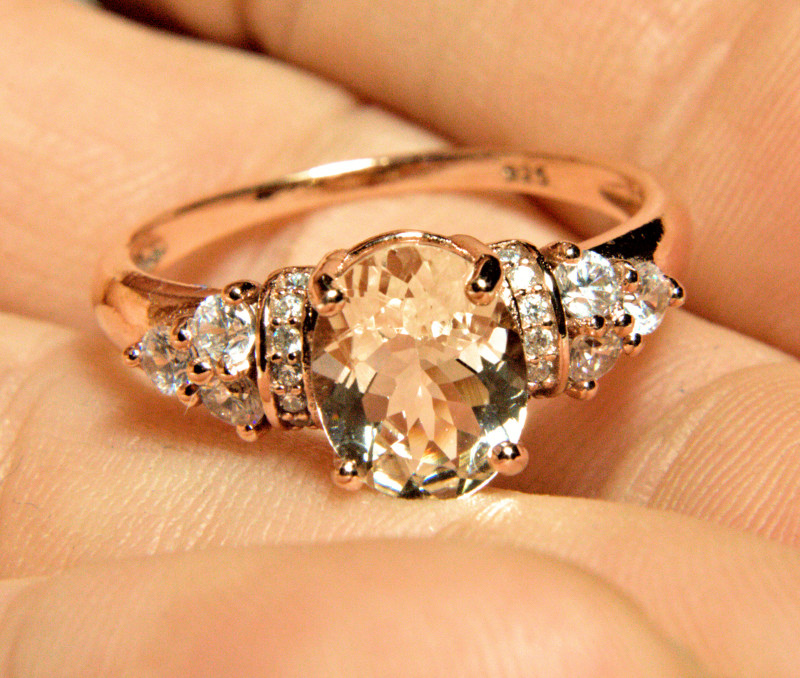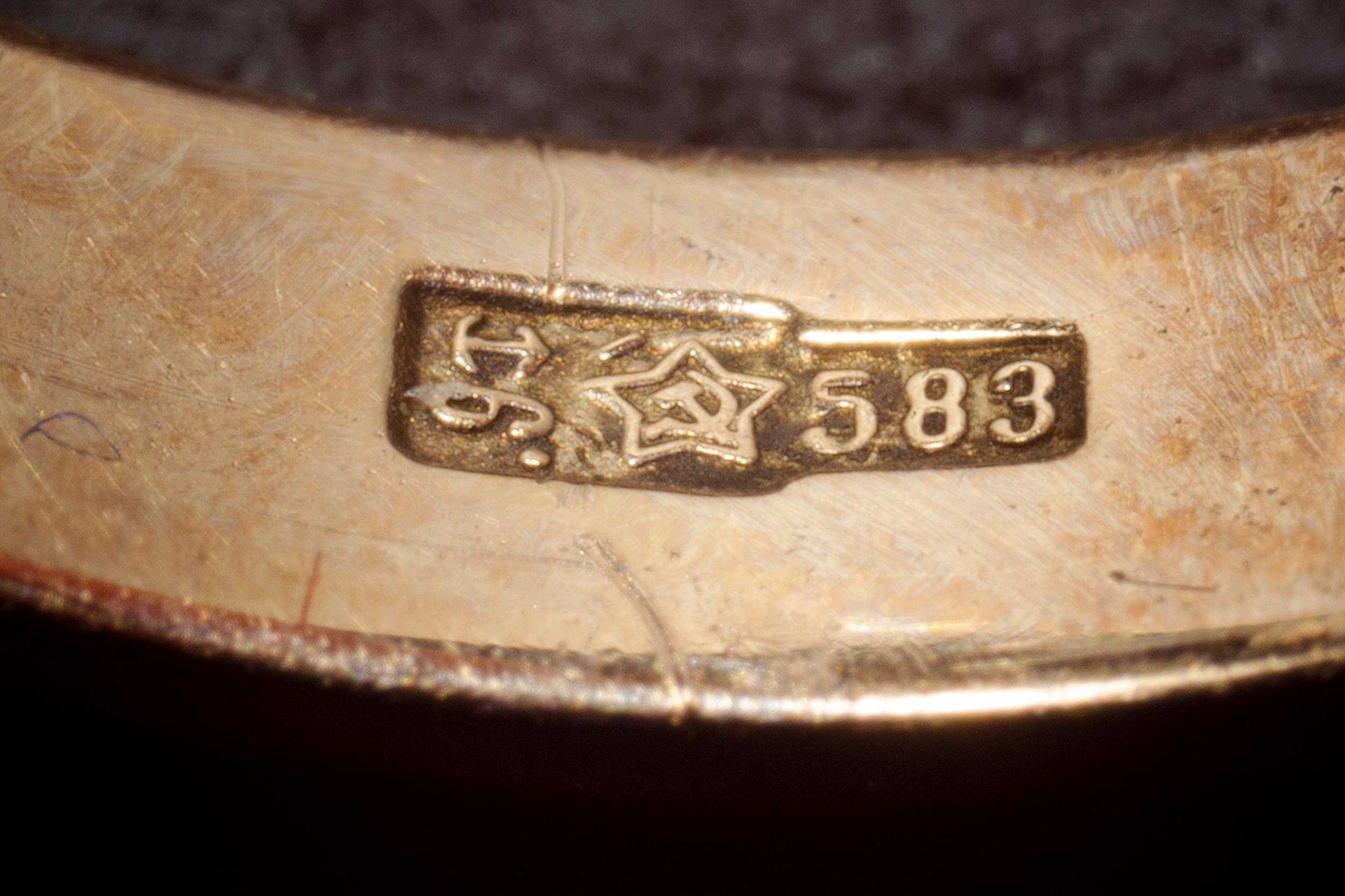
925 印记及其他珠宝标志完整指南
 如果您曾经仔细检查过高品质珠宝,您可能会注意到金属上刻有小字、字母或数字。这些被称为珠宝标记。但珠宝上的标记是什么意思呢?
如果您曾经仔细检查过高品质珠宝,您可能会注意到金属上刻有小字、字母或数字。这些被称为珠宝标记。但珠宝上的标记是什么意思呢?
珠宝标记通常被称为纯度标记或质量标记,因为标记通常表示金属类型和纯度。
标记对于鉴定珠宝(尤其是贵重珠宝)非常重要。您会在黄金、铂金、白银和钯金等贵金属上看到这些标记。
但标记还可以传达谁创造了这件珠宝,谁鉴定了它,以及珠宝在哪里制造。
今天,我们将提供完整的珠宝印章列表以及每个印章的含义。到最后,您将能够仅凭肉眼和放大镜就能识别出正宗、有价值的珠宝。

珠宝上的纯度标记是什么?
最常见的珠宝标记是纯度标记。纯度标记也称为质量标记或纯度标准,它告诉您金属的纯度。让我们从黄金纯度标记开始。
黄金纯度
黄金纯度以克拉为单位,与宝石使用的“克拉”重量不同。克拉实际上是一个比率,它告诉你黄金中纯金和非黄金金属的比例是多少。黄金的纯度称为“克拉数”。
纯度为 100% 的黄金为 24K(24 克拉),因此如果将其与百分比进行比较,则 24 是比率中“100”的最大值。18K 金是 18 份纯金与 6 份其他金属组成的,因此其纯金含量为 75%(18 是 24 的 75%)。10K 金是 10 份黄金与 14 份其他金属组成的,因此其纯金含量为 41.67%。
因此,黄金纯度标记可能有克拉数或百分比;有时,珠宝商会将两者并排标记。
银纯度
银的纯度或“成色”的测量方法与黄金类似,但不包含克拉比率。相反, 银的纯度标志只使用纯银的百分比数字,没有小数点。
黄金首饰上的百分比标记也会给出不带小数的数字。例如,75% 将被标记为 750,因为从技术上讲,它相当于 1,000 中的 750 份。
925 是最著名的银纯度标记之一,但珠宝上的 925 标记代表什么呢?

珠宝上的 925 印记
简而言之,925 珠宝印记(标志)表示金属纯度为 92.5%。大多数情况下,925 用于银饰或含银的珠宝。
纯银和 925 银有什么区别?从本质上讲,纯银和 925 银意思相同:金属中含有 92.5% 的纯银和 7.5% 的其他金属。一些国家对添加哪些金属才能算作真正的“纯”银有具体要求。
那么,925 银是真银吗?是的,925 或标准纯银是真银。事实上,100% 银太软,不适合做首饰,所以你能找到的最高纯度的银是 999 或 99.9% 纯银。
除了银饰以外,您还可能会在金饰上看到 925 标志。
925 金首饰不是纯金,而是镀金的 925 银。换句话说,这件首饰在纯银基底上附着一层金。镀金纯银首饰通常称为镀金银饰,尽管镀金银饰有时需要更厚的镀层。
那么,925 钯金是什么?
925 钯实际上是 925 银,但钯占混合的附加金属的 3%。钯的添加使银变得更硬,更耐失去光泽,而且略有光泽。
相比之下, 925 铂金含有 92.5% 的纯度。但通常情况下,您会在银或镀金银上看到 925。
当然,925 或 92.5% 并不是唯一的数字珠宝标记。

珠宝上的其他数字标志含义
除了常见的 925 之外,您还会在珠宝上看到许多其他数字。
例如,珠宝中的 825 是什么意思?825 珠宝印记表示金属纯度为 82.5%。对于黄金来说,这相当于 19K。
珠宝上的 916 是什么意思?916 珠宝印记表示金属纯度为 91.6%。对于黄金来说,这相当于 22K。
为了给您提供总结,以下是您可能看到的典型黄金克拉数和百分比的列表:
24K; 24k; 24 克拉; 99.9%; 999
18K;18k;18 克拉;75%;750
14K;14k;14 克拉;58.5%;585
12K;12k;12 克拉;50%;500
10K;10k;10克拉;41.7%;417
有可能存在介于 22K 和 16K 之间的金。你可以通过将金的克拉数除以 24 来计算这些金的百分比——对于 22K 金,22 除以 24 等于 0.916,即 91.6%,而标记可能是 916。
作为参考,24K 金通常太软,不适合用作珠宝。珠宝中最纯的黄金是 22K 金。
另一个需要了解的数字是1/20,通常后面或前面是克拉数,有时是“GF”——这印在包金珠宝上,表示黄金占总重量的 5%(1/20)。14K 包金戒指内部可能印有“GF 14/20”或“1/20 14K GF”。
大多数数字标记都表示金属纯度,只有几个例外。
戒指尺寸和宝石重量
除了纯度数字外,戒指上偶尔还会刻有另一个数字标志,例如 6、7、8、9 和 10——这些数字表示戒指的尺寸。
镶嵌有钻石等珍贵宝石的戒指也可能有标记,标明宝石的重量(以克拉为单位)。
宝石重量可以单独蚀刻为数字(例如,宝石重量为 0.75 克拉时,蚀刻为“0.75”或“.75”),也可以蚀刻为数字后跟“ct”。对于多钻戒指(例如密钉镶嵌的戒指),珠宝商可能会留下标记,标明宝石上所有钻石的总重量,数字后跟“tdw”(代表“钻石总重量”)。
其他与宝石相关的珠宝标志包括:
说到字母标记……
 上图:意大利珠宝品牌 Dirce Repossi 的珠宝标志 | 图片来源:Mwsa94, 知识共享署名-相同方式共享 4.0 国际许可
上图:意大利珠宝品牌 Dirce Repossi 的珠宝标志 | 图片来源:Mwsa94, 知识共享署名-相同方式共享 4.0 国际许可
珠宝上刻的字母代表什么意思?
数字是最常见的标记类型,但您也会看到字母。字母可以有多种含义,但我们首先会讨论与金属相关的含义。
金属种类
由于某些金属更有价值,因此了解您的珠宝是由哪种金属制成的非常重要——这就是字母标记派上用场的地方。
与所用金属类型相对应的常见字母珠宝标记是:
P 或 KP — 铅金(P 通常为 14K 金,而 KP 可接续任何克拉数,例如 18KP,表示黄金纯度为该等级或更高)
PLAT 或 PT— 白金
SS 或钢或 St. Steel — 不锈钢
银或 S. 银或 STG 或 STER — 纯银
Pd 或 Pall — 钯
有些金属会直接写出来,比如钨或钛。有些金属标记可能会让人混淆,比如“德国银”或“镍银”,它们不含银,而是铜、镍和/或锌。
黄金首饰有一套独特的字母标记。
黄金首饰上的字母标记
您知道黄金纯度标记,但黄金首饰上也有一些字母标记需要您熟悉。例如,克拉可以写成 K、Kt、Karat 或 WGD(黄金重量)。
其他黄金首饰字母标记包括:
通常,这些标记与克拉数有关。例如,“14K GP”表示该首饰已镀上 14K 金。
赞助商或制造商标志
一些珠宝上的字母标记表明了制造者是谁,通常被称为“制造商标记”。
首先,制作珠宝的金匠可能会印上他们的姓名首字母。制作珠宝的公司(珠宝商)或分销制造商可能会有“赞助商标记”,例如“T & CO.”代表蒂芙尼公司。
制造商的标记实在太多,无法一一列出,但您可以使用Lang Antiques或Heritage Auctions的搜索功能。
制造商标记通常也包含符号。
 图片来源:Star61 | Creative Commons 署名-相同方式共享 4.0 国际许可
图片来源:Star61 | Creative Commons 署名-相同方式共享 4.0 国际许可
珠宝上刻印的符号含义
虽然您可以使用蚀刻符号定制珠宝,但某些符号可以为您提供有关珠宝来源或规格的信息。
纯度标记周围的形状
根据金属的不同,纯度数字标记可能被特定形状包围。常见的金属纯度符号有:
银色 — 横椭圆形
钯金 — 每个数字周围都有相连的垂直椭圆
金色 — 水平拉长的八边形
铂金——五角大楼指向上方
Maker's Mark 符号
如前所述,制造商标记通常包含字母和形状。
例如,戒指内的箭头印章(箭头从左到右穿过字母“U”)可能表示它是由美国罗德岛的 Uncas Manufacturing Co. 制造的。
由于设计师、珠宝商和金匠数量众多,因此几乎不可能列出每一个制造商的标志。
化验办公室符号
在珠宝上打上标记以表明其真实性并非新鲜事,大约始于公元 1238 年。政府和其他机构希望确保买家了解他们所购买珠宝的真实价值。
鉴定标记通常由检验机构进行,由值得信赖的专家检查物品并根据其真实特征进行标记。检验机构仍然存在,伯明翰检验机构可以说是最成熟的例子。
也就是说,珠宝上印制的一些符号可以追溯到很久以前,许多符号都是为了表明鉴定该珠宝的检验机构。以伯明翰检验机构为例,他们使用锚形符号印章。
标记的现代历史可以追溯到英国,大多数检验机构都位于英国。英国检验机构的标志包括:
城堡:爱丁堡
玫瑰:谢菲尔德
豹头:伦敦
在英国以外,巴黎检验所使用野猪头印记。一般来说,自 1838 年以来,金饰上的鹰印记意味着它来自法国。
以下是一些其他国家检验机构的符号:

回到英国后,他们还建立了日期标志。
珠宝上的日期戳
从 1478 年开始,英国要求贵重珠宝上必须印有制造日期(尽管严格来说,法国从 1427 年开始使用这一规定)。该要求于 1999 年结束,日期印章转为自愿使用,但许多珠宝商和检验机构仍然采用日期标记。
但是,日期以字母形式给出,这些字母对应于特定年份,每 25 年重新开始。唯一不使用的字母是 I、J 或 L,因为它们看起来很相似,可能会混淆。例如,从 2000 年开始的当前周期跳过了字母 I,从 2007 年的 H 到 2008 年的 J。
由于不同国家有不同的时间线,每个字母对应的年份可能不同。这时国家和检验机构的符号就派上用场了。
英国各主要检验机构处于同一时间线上,因此这里列出了最近的信件和年份:
2019:U
2018年:
2017 年:
2016 年:R
…等等。自 2000 年该系统开始实施以来,1999 年鉴定的珠宝采用新的字体样式,以 Z 开头,而前一年的字母则位于其前一位。
25 年期满后会发生什么?为了避免混淆,检验机构会更改字体或字母轮廓,以区分所指的 25 年期限。
了解您的珠宝的价值!
如果您曾经想过:如何识别珠宝标记? ——现在您知道了!标记可能很小,但有了放大镜和本指南,您就可以自信地购买珍贵的黄金、白银、铂金或钯金珠宝了!
准备购物了吗?浏览我们的珍贵珠宝系列!
搜索Fashion Encyclopedia




